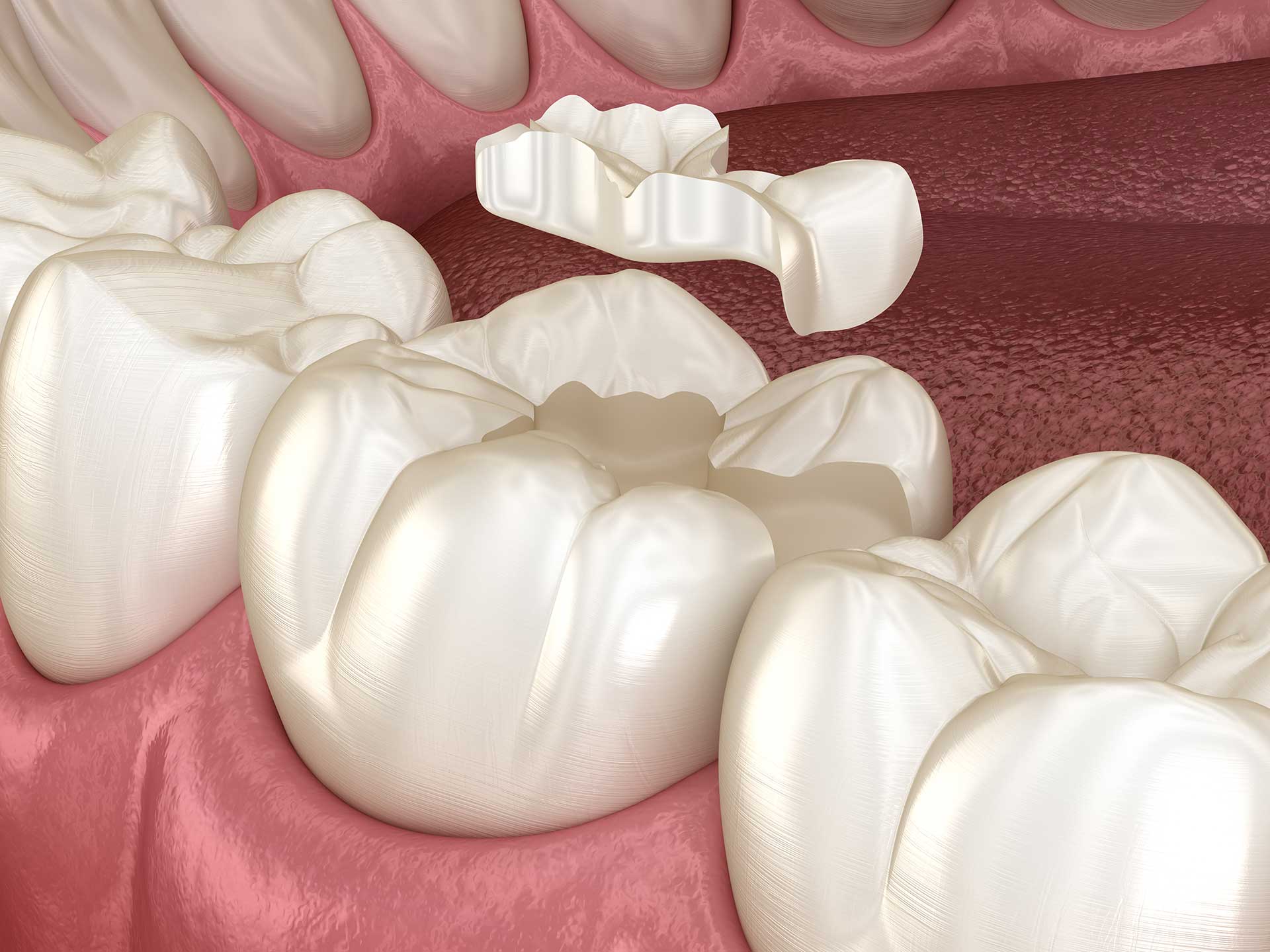Dental filling is the process of filling the empty space in a tooth that has been decayed or fractured. Dentists can use different materials for dental fillings and inlay and onlay fillings are among those materials.
What is an Inlay Filling?
An inlay filling is a dental filling material used to preserve the protective layer of the teeth, known as the enamel. Inlay filling is made from durable materials such as metal or porcelain. One advantage of these materials is that they closely match the original color of the tooth. Another advantage is that inlay fillings are long-lasting and provide a good fit to the tooth.
Who is it Recommended for?
Inlay fillings, which are a type of inlay and onlay fillings, are recommended for large tooth cavities or tooth fractures. This is because these types of dental problems may not be treatable with regular dental fillings. Inlay fillings can also be recommended for individuals with enamel erosion.
Since inlay fillings are prepared to match the original structure of the tooth, they can also be used to preserve the aesthetic appearance of the teeth.
What are the Advantages and Disadvantages of Inlay Fillings?
The advantages of inlay fillings are that they are prepared to match the original structure of the tooth and they are long-lasting. They can also be used to preserve the aesthetic appearance of the tooth.
The disadvantages are that they are relatively more expensive compared to other dental filling materials and they require multiple sessions to be prepared by your dentist.
What is an Onlay Filling?
Onlay filling is a dental filling material used to correct irregularities on the front surface of the teeth. Since they are applied to the front surface of the teeth, they are ideal for preserving the aesthetic appearance of the teeth. Onlay fillings can also be made from durable materials such as metal or porcelain.
Who is it Recommended for?
Onlay fillings, which are another type of inlay and onlay fillings, are recommended for individuals with no stains or decay on the front surface of their teeth but have shape irregularities. Individuals with tooth decay or wear may require regular dental fillings or dental crowns. Onlay fillings can also be used for individuals who want to correct other aesthetic issues on the front surface of their teeth.
What are the Advantages and Disadvantages of Onlay Fillings?
The advantages of onlay fillings include improving the aesthetic appearance of the tooth, ease of application and providing a good fit to the tooth. Additionally, another advantage of onlay fillings is that they can be used in cases of tooth decay or wear.
The disadvantages are that they are relatively more expensive compared to other dental filling materials and they require multiple sessions to be prepared by your dentist.
How are Inlay and Onlay Fillings Different from Other Dental Fillings?
Inlay and onlay fillings are different from other dental fillings. They are prepared using a more specialized and precise technique. Other types of fillings usually involve removing more tooth material by removing the decayed or fractured portion of the tooth. However, when preparing inlay/onlay fillings, the dentist aims to preserve the natural shape and structure of the tooth.
Like other dental fillings, inlay/onlay fillings are used to repair decayed or fractured portions of the teeth. However, less tooth structure is removed compared to the tooth's own structure. This helps preserve the natural structure of the tooth, resulting in a more aesthetic and healthy outcome.
Inlay and onlay fillings are more durable and have a longer lifespan compared to other fillings. These fillings are made using special ceramic or porcelain materials, making them more robust and resilient compared to other filling materials.
Another difference between inlay/onlay fillings and other dental fillings is that the dentist takes an impression of the tooth's exact shape during the filling preparation stage. This impression is then used to create a custom-made filling in a laboratory setting. As a result, inlay/onlay fillings may be more expensive than other dental fillings. However, they can be a more suitable option in the long term, as they preserve the natural aesthetics and function of the teeth.
